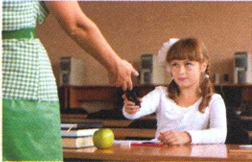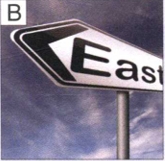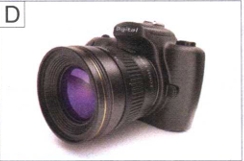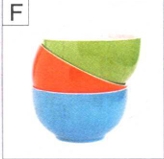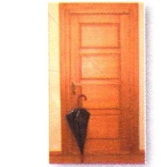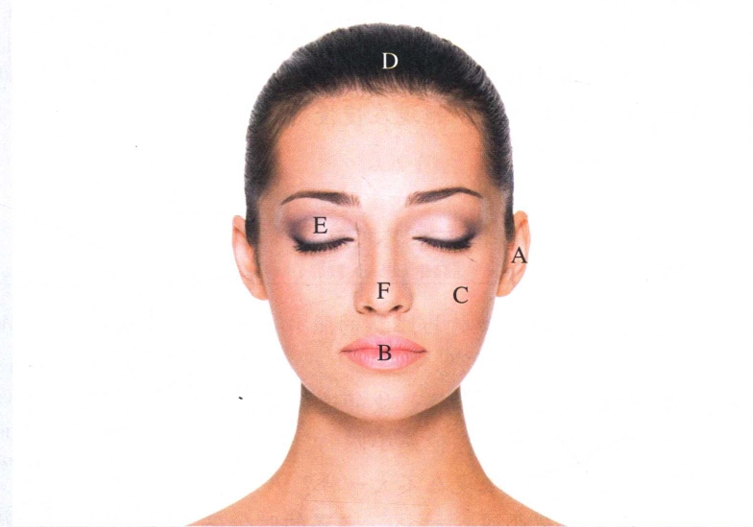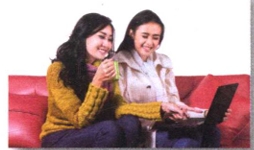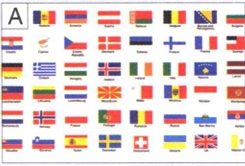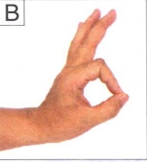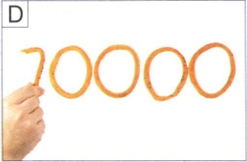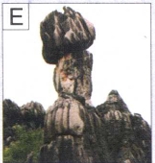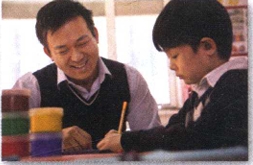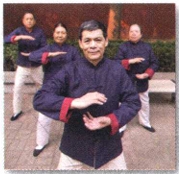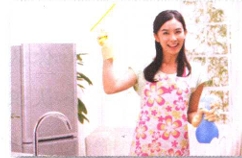热身 1 Warm-up
给下面的词语选择对应的图片 Match the pictures with the words.




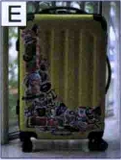

- 1 裤子(kù zi):
- 2 果汁(guǒ zhī):
- 3 西红柿(xī hóng shì):
- 4 衬衫(chèn shān):
- 5 袜子(wà zi):
- 6 行李箱(xíng lǐ xiāng):
2
你一般在哪儿买衣服?你有哪些好的购物经验?
Where do you often buy clothes? Do you have any good shopping experiences to share?
| 购物地点(gòu wù dì diǎn) | 质量 | 价格 | 评价(píng jià) |
|---|---|---|---|
| 商场 | 很好 | 太贵了 | 很满意 |
| 市场 | 还可以 | 合适 | 一般 |
| 小店 | 不太好 | 比较便宜 | 不太满意 |
| 网上 | 很差 | 非常便宜 | 不满意 |
课文 1 Texts
张远和李进聊李进昨晚的购物经历 06-1
张远:昨天晚上我给你打电话一直没人接,你忙什么呢?
李进:昨天妻子让我陪她去超市买果汁。我把手机忘在家里了。
张远:买这么点儿东西也用不了那么长时间啊!
李进:我们先去逛了会儿商场。一进门,售货员就热情地为我们介绍这、介绍那,她买了一条裤子、一件衬衫、两双袜子,然后我们就高高兴兴地回家了。
张远:买东西时我只看自己想买的,而且喜欢自己看、自己选,不希望被别人打扰。
李进:是啊!回家以后,我才发现,竟然忘了去商场的超市买果汁!
生词
1. 果汁 guǒzhī n. fruit juice
2. 售货员 shòuhuòyuán n. salesperson
3. 袜子 wàzi n. socks
4. 打扰 dǎrǎo v. to disturb, to bother
5. 竟然 jìngrán adv. indicating unexpectedness
2
王静在商店买西红柿 06-2
王静:西红柿新鲜吗?怎么卖?
售货员:七块钱一斤,您放心,保证百分之百新鲜。
王静:怎么这么贵啊!我记得昨天才三块五一斤,今天的价格是昨天的两倍。
售货员:您问的这种是 “绿色” 的。一分钱一分货。每天吃一两个这种新鲜的西红柿,对皮肤有好处。
王静:好,那我先买几个尝尝。
售货员:好的,给您西红柿,一共两斤,十四块。
生词
6. 西红柿 xīhóngshì n. tomato
7. 百分之 bǎi fēn zhī percent
8. 倍 bèi m. times, -fold
9. 皮肤 pífū n. skin
10. 好处 hǎochù n. benefit, advantage
11. 尝 cháng v. to taste
售货员:先生,我们店的行李箱都在这里,请问您要什么样的?
李 进:我想买一个轻一点儿的。
售货员:您看看这个,不管从价格方面看,还是从质量上看,都是值得考虑的。
李 进:质量是不错。请问这个多少钱?
售货员:现在我们商场正好有打折活动,打完折是999。另外,一年内我们都负责免费修理。
李 进:你们的服务不错,价格也可以,就买这个吧。
生词
12. 轻 qīng adj. light, of little weight
13. 方面 fāngmiàn n. aspect
14. 值得 zhídé v. to be worth
15. 活动 huódòng n. activity, event
16. 内 nèi n. in, within
17. 免费 miǎn fèi v. to be free of charge
18. 修理 xiūlǐ v. to repair, to mend
拼音课文 Texts in Pinyin
1、Zhāng Yuǎn hé Lǐ Jìn liáo Lǐ Jìn zuó wǎn de gòuwù jīnglì
Zhāng Yuǎn: Zuótiān wǎnshang wǒ gěi nǐ dǎ diànhuà yìzhí méi rén jiē, nǐ máng shénme ne?
Lǐ Jìn: Zuótiān qīzi ràng wǒ péi tā qù chāoshì mǎi guǒzhī. Wǒ bǎ shǒujī wàng zài jiā li le.
Zhāng Yuǎn: Mǎi zhème diǎnr dōngxi yě yòng bu liǎo nàme cháng shíjiān a!
Lǐ Jìn: Wǒmen xiān qù guàngle huìr shāngchǎng. Yí jìn mén, shòuhuòyuán jiù rèqíng de wèi wǒmen jièshào zhè, jièshào nà, tā mǎile yì tiáo kùzi, yí jiàn chènshān, liǎng shuāng wàzi, ránhòu wǒmen jiù gāogāoxìngxìng de huí jiā le.
Zhāng Yuǎn: Mǎi dōngxi shí wǒ zhǐ kàn zìjǐ xiǎng mǎi de, érqiě xǐhuan zìjǐ kàn, zìjǐ xuǎn, bù xīwàng bèi biérén dǎrǎo.
Lǐ Jìn: Shì a! Huí jiā yǐhòu, wǒ cái fāxiàn, jìngrán wàngle qù shāngchǎng de chāoshì mǎi guǒzhī!
2、Wáng Jìng zài shāngdiàn mǎi xīhóngshì
Wáng Jìng: Xīhóngshì xīnxiān ma? Zěnme mài?
shòuhuòyuán: Qī kuài qián yì jīn, nín fàng xīn, bǎozhèng bǎi fēn zhī bǎi xīnxiān.
Wáng Jìng: Zěnme zhème guì a! Wǒ jìde zuótiān cái sān kuài wǔ yì jīn, jīntiān de jiàgé shì zuótiān de liǎng bèi.
shòuhuòyuán: Nín wèn de zhè zhǒng shì “lǜsè” de. Yì fēn qián yì fēn huò. Měi tiān chī yì liǎng ge zhè zhǒng xīnxiān de xīhóngshì, duì pífū yǒu hǎochù.
Wáng Jìng: Hǎo, nà wǒ xiān mǎi jǐ ge chángchang.
shòuhuòyuán: Hǎo de, gěi nín xīhóngshì, yígòng liǎng jīn, shísì kuài.
3、Lǐ Jìn zài shāngchǎng mǎi xínglǐxiāng
shòuhuòyuán: Xiānsheng, wǒmen diàn de xínglǐxiāng dōu zài zhèlǐ, qǐngwèn nín yào shénme yàng de?
Lǐ Jìn: Wǒ xiǎng mǎi yí ge qīng yidiǎnr de.
shòuhuòyuán: Nín kànkan zhège, buguǎn cóng jiàgé fāngmiàn kàn, háishi cóng zhìliàng shang kàn, dōu shì zhíde kǎolǜ de.
Lǐ Jìn: Zhìliàng shì búcuò. Qǐngwèn zhège duōshao qián?
shòuhuòyuán: Xiànzài wǒmen shāngchǎng zhènghǎo yǒu dǎ zhé huódòng, dǎwán zhé shì jiǔbǎi jiǔshí jiǔ. Lìngwài, yì nián nèi wǒmen dōu fùzé miǎn fèi xiūlǐ.
Lǐ Jìn: Nǐmen de fúwù búcuò, jiàgé yě kěyǐ. jiù mǎi zhège ba.
注释 1 竟然
Notes
“竟然”,副词,用在动词或形容词前,表示没有想到,出乎意料。例如:
The adverb “竟然” is used before a verb or an adjective to indicate unexpectedness or surprise. For example:
(1)这个歌特别好听,最近很流行,你竟然没听过?
(2)来这家饭馆吃饭的人竟然这么多,排队都排到门口外边去了!
(3)回家以后,我才发现,竟然忘了去商场的超市买果汁!
● 练一练 Practise
完成句子或对话 Complete the sentences/dialogues.
(1)在我听来,上海话和北京话几乎完全不同,。
(2)真是没想到,,我几乎没认出你来。
(3)A: 这么远的路,?
B: 今天天气好,而且我喜欢骑自行车,又能锻炼身体,不好吗?
2 倍
“倍”,量词,表示倍数。它属于自主量词,后面一般不跟名词。例如:
The measure word “倍” indicates the quotient of one number divided by another. It is an unbound measure word, usually not followed by any noun. For example:
(1)二的五倍是十。
(2)我的工资是每月 5000 块,他的工资是我的两倍。
(3)我记得昨天才三块五一斤,今天的价格是昨天的两倍。
练一练 Practise
完成句子或对话 Complete the sentences/dialogues.
- 200是 。(倍)
- 每年七八月,有很多游客来这儿玩儿,最多的时候 。(倍)
-
A: 今年咱们公司的收入怎么样?
B: 。(倍)
3 值得
“值得”,动词,表示做某事有价值,有好的结果。例如:
The verb “值得” indicates that something is worth doing and will bring good results.
For example:
- (1)您看看这个,不管从价格方面看,还是从质量上看,都是值得考虑的。
- (2)你应该改改自己的脾气,别总是为一点儿小事生气,不值得。
- (3)我们总是很容易看到一个人的缺点,但是别忘了,他身上的优点更值得我们去发现、去学习。
练一练 Practise
完成句子或对话 Complete the sentences/dialogues.
- 这件衣服 。(值得)
-
A: 你觉得这个办法怎么样?会有效果吗?
B: 。(值得)
-
A: 你学法律一定很辛苦很累吧?
B: 是,不过 。(值得)
比一比 Compare 值得—值
相同点:都可以表示做某事有意义或有价值。★
Similarity: Both can mean it’s meaningful to do something or something is worth doing.
这个调查对今后的工作很有用,花再多时间也值得/值。
不同点:Differences:
1. 表示★这个意思时, “值得” 是动词,后面可以带动词或小句;而 “值” 是形容词,后面一般不带其他成分。
In case ★, “值得” is a verb that can be followed by another verb or a clause, while “值” is an adjective which is usually not followed by any other element.
别生气了,咱们不值得为这么点儿小事生气。
为这么点儿小事生气,一点儿也不值。
2. 都可做动词,但意思不同。 “值得” 表示价钱相当、合算,后面加动词或动词短语;而 “值” 表示货物和价钱相当,后面加钱数。
Both can be used as verbs, yet with different meanings. “值得” means the price is fair, followed by a verb or verb phrase, while “值” means the commodity is worth the price, followed by an amount of money.
这个沙发价钱不贵,质量又好,值得买。
这个手机值五千块。
● 做一做 Drills
选词填空 Tick or cross
| 值得 | 值 | |
|---|---|---|
| (1)花了两个小时看这么个没意思的电影,你说____吗? | √ | √ |
| (2)这本书____一看。 | √ | × |
| (3)这瓶葡萄酒____一千块。 | ||
| (4)这个问题____大家注意。 | ||
| (5)一件毛衣不____花两千块钱。 |
根据课文内容回答问题 Answer the questions based on the texts.
课文1:
① 昨天晚上李进为什么没接张远的电话?
② 李进夫妻俩都买什么了?
课文2:
③ 昨天西红柿多少钱一斤?今天呢?
④ 王静买的西红柿怎么样?
课文3:
⑤ 李进想买什么样的行李箱?花了多少钱买的?
⑥ 这个店的售后服务怎么样?








